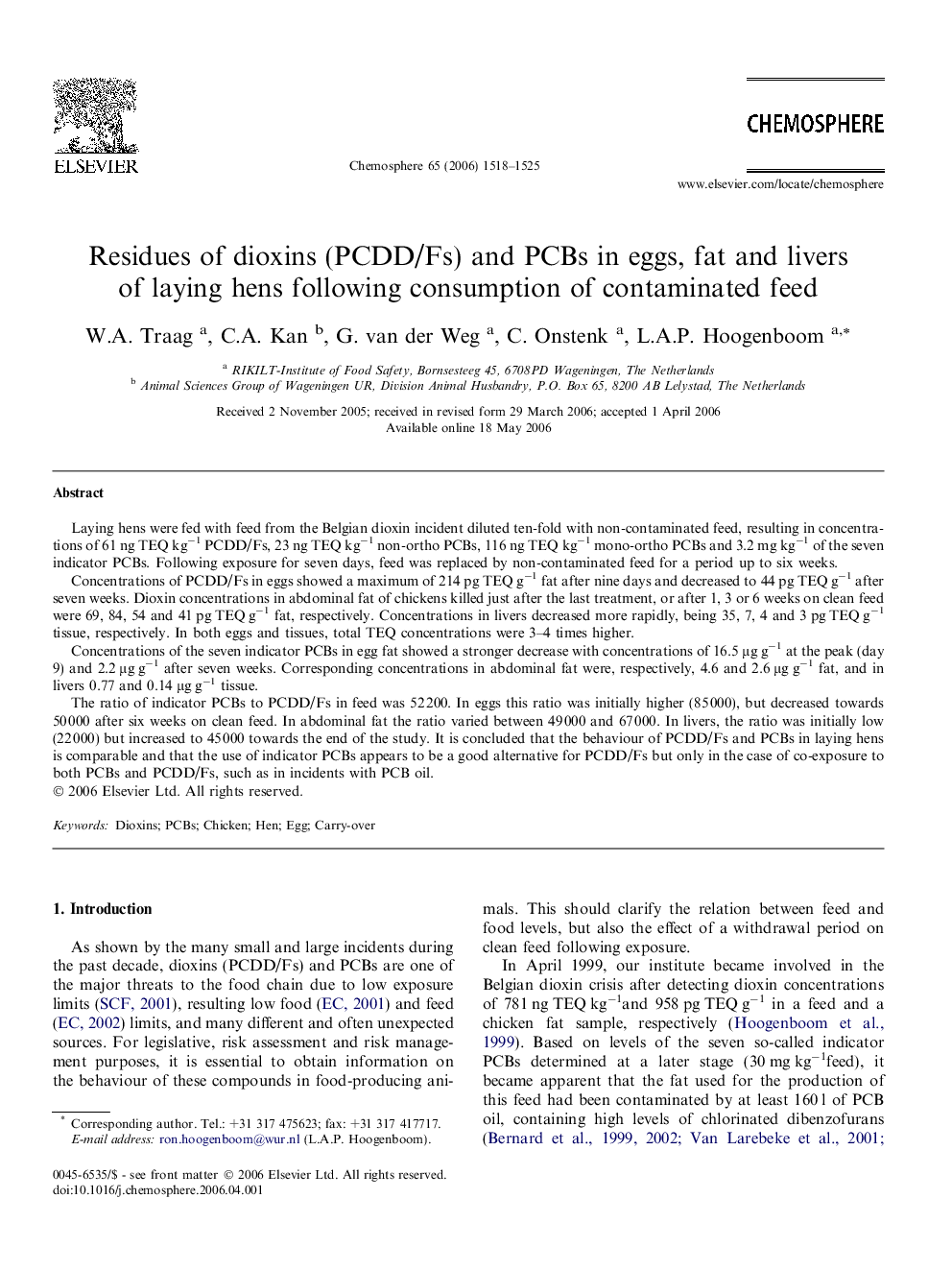| Article ID | Journal | Published Year | Pages | File Type |
|---|---|---|---|---|
| 4415649 | Chemosphere | 2006 | 8 Pages |
Laying hens were fed with feed from the Belgian dioxin incident diluted ten-fold with non-contaminated feed, resulting in concentrations of 61 ng TEQ kg−1 PCDD/Fs, 23 ng TEQ kg−1 non-ortho PCBs, 116 ng TEQ kg−1 mono-ortho PCBs and 3.2 mg kg−1 of the seven indicator PCBs. Following exposure for seven days, feed was replaced by non-contaminated feed for a period up to six weeks.Concentrations of PCDD/Fs in eggs showed a maximum of 214 pg TEQ g−1 fat after nine days and decreased to 44 pg TEQ g−1 after seven weeks. Dioxin concentrations in abdominal fat of chickens killed just after the last treatment, or after 1, 3 or 6 weeks on clean feed were 69, 84, 54 and 41 pg TEQ g−1 fat, respectively. Concentrations in livers decreased more rapidly, being 35, 7, 4 and 3 pg TEQ g−1 tissue, respectively. In both eggs and tissues, total TEQ concentrations were 3–4 times higher.Concentrations of the seven indicator PCBs in egg fat showed a stronger decrease with concentrations of 16.5 μg g−1 at the peak (day 9) and 2.2 μg g−1 after seven weeks. Corresponding concentrations in abdominal fat were, respectively, 4.6 and 2.6 μg g−1 fat, and in livers 0.77 and 0.14 μg g−1 tissue.The ratio of indicator PCBs to PCDD/Fs in feed was 52 200. In eggs this ratio was initially higher (85 000), but decreased towards 50 000 after six weeks on clean feed. In abdominal fat the ratio varied between 49 000 and 67 000. In livers, the ratio was initially low (22 000) but increased to 45 000 towards the end of the study. It is concluded that the behaviour of PCDD/Fs and PCBs in laying hens is comparable and that the use of indicator PCBs appears to be a good alternative for PCDD/Fs but only in the case of co-exposure to both PCBs and PCDD/Fs, such as in incidents with PCB oil.
